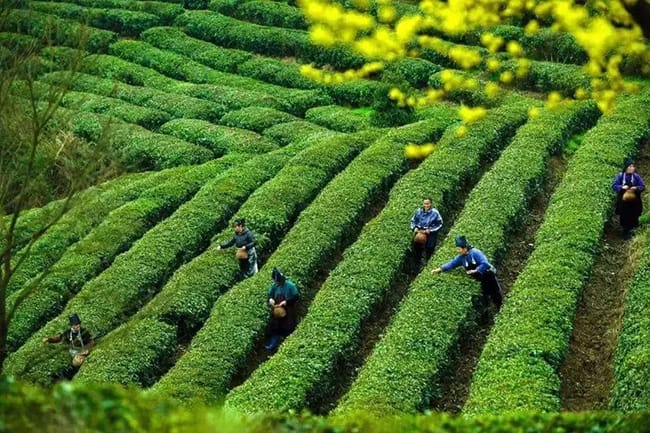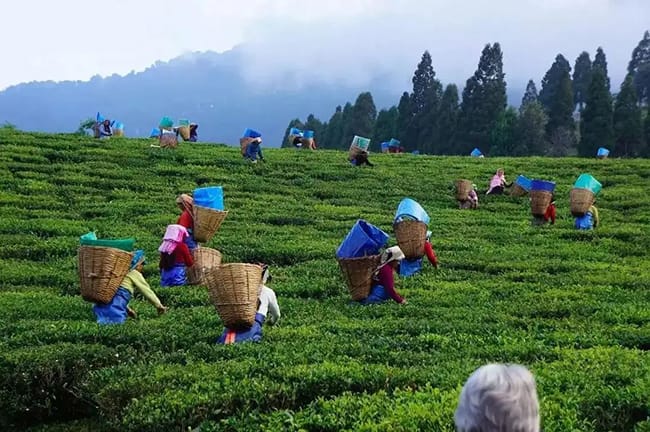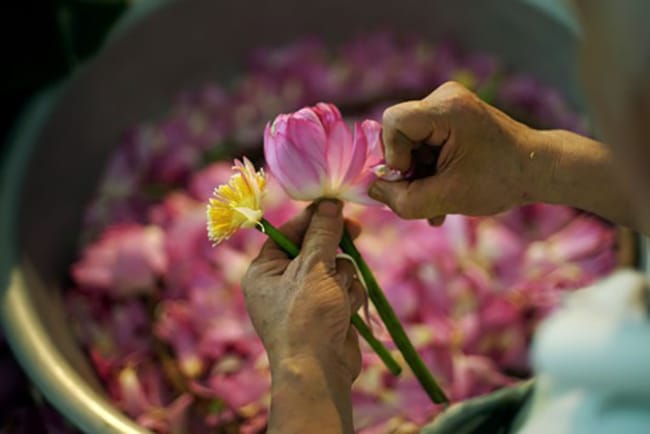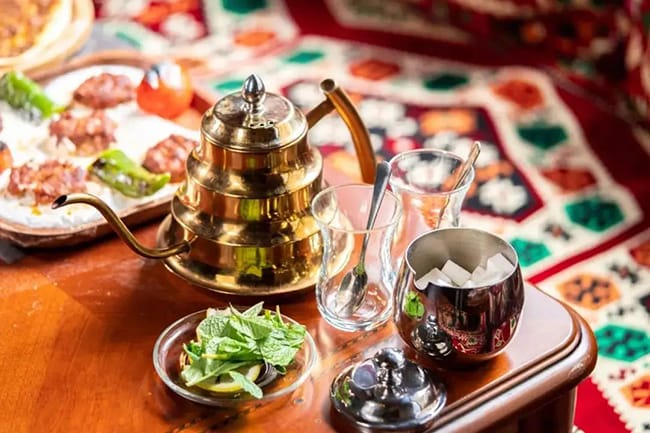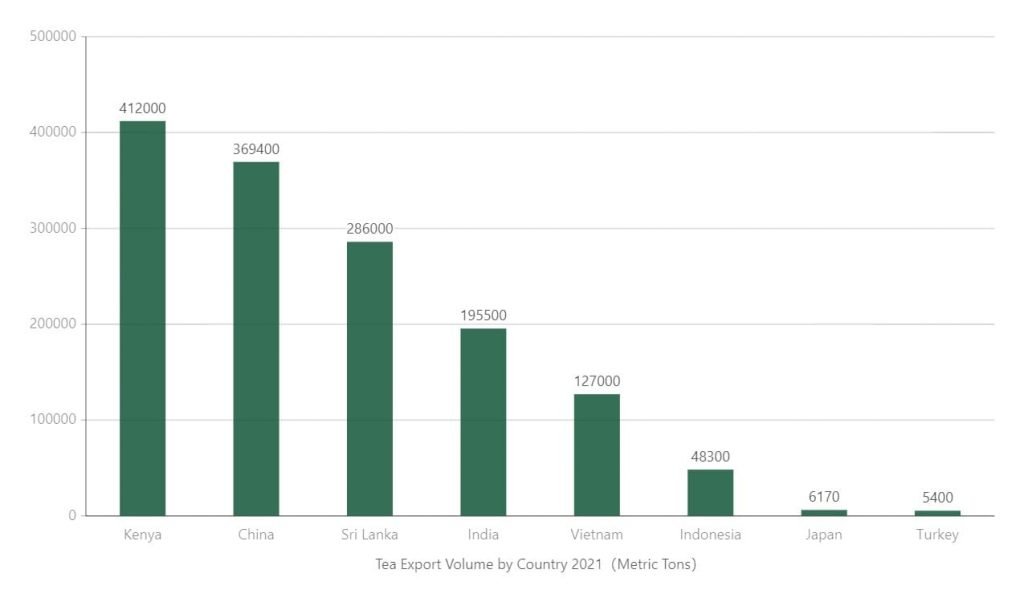Last Updated on 04/19/2022 by Desmond
Tea is one of the most popular drinks in the world. It originated in China and has a long history. Even to this day, China still has the largest output among all tea producing countries. The charm of tea fascinates people all over the world, it has also been an important commercial crop, and many countries are working on the tea planting industry.
However, tea plants have requirements for the cultivation environment, and it influences the leaves’ quality a lot. The main tea-producing countries are concentrated in Asia and Africa. Besides, the COVID-19 Pandemic has had a certain impact on the tea industry in recent years.
CONTENT
8 Countries’ Tea Export Volume 2021
You can find every primary tea-producing country’s annual output on the internet. But I found that each report shows different data for the same item. I suppose there are 3 following reasons:
- Most reports are provided by the third-party statistical companies, and it may be some interest relations;
- There are too many tea gardens, and it’s hard to get an accurate statistics data;
- The statistical standard for the tea output is not uniform. Somebody takes the fresh leaves’ harvest volume as the standard, some take the primarily processing rough tea yield, and some take the final products.
Thus, it seems that it will be more reasonable to take the export volume of tea production of a country as a standard to judge how it impacts the world market.
1. China
As the birthplace of tea, it seems no need to talk about it for long. China is the largest tea-producing country globally, and it also owns the richest in the types. The tea cultivation area is about 3165 thousand hectares, occupying 62.1% total cultivation area in the world. The tea gardens are primarily distributed in the regions south of the Yangtze River, with almost every province growing tea.
In the past 2021, China produced about 3180 thousand tons of tea. China is also a large tea consumption country, and most output is for the domestic market. Therefore, China is not the No.1 tea export country, even though it has the most significant yield all the time.
China exported about 369.4 thousand tons of tea in 2021. Among it:
- 84.5% is green tea, about 312.3 thousand tons;
- 8% is black tea, about 29.6 thousand tons;
- 5.2% is Oolong, about 19.1 thousand tons;
- 0.6% is Pu-erh tea, about 2176 tons;
- 0.09% is dark tea, about 344 tons;
Source: http://www.customs.gov.cn/
2. India
India is the second place tea producing country in the world. Camellia Sinensis was grown in Assam, India, in the 10th century. But the soil was barren, so tea wasn’t getting trend at that time.
Tea rise in India because of the British colonial rule and the tea garden plans of the East India Company. The tea demand was huge for British and other western countries at that time. Importing tea from China cost a lot, and the England soil wasn’t fit for tea planting; India became an ideal choice.
Since then, India has gradually developed into a large-scale tea-producing country just behind China. Darjeeling, Assam, and Nilgiri are India’s most famous tea-producing regions.
India also gave birth to its own tea culture, and black tea is the soul. Just like in China, most Indian teas are for domestic consumption. In 2021, India produced about 1280 thousand tons of tea and exported 195.5 thousand tons.
Source: http://www.teaboard.gov.in/
3. Kenya
Kenya is located in East Africa. It is the third-place tea-producing country and the No.1 in tea exportation. Black tea cultivation in Kenya began in the British colonial period. After its independence in 1963, many small-scale tea gardens are grown fast under the government’s support and soon became the country’s economic mainstay.
The main tea-producing regions concentrate on the plateaus and valleys in the west of Mount Kenya, 1000-2700 meters altitude. The tea produces all year round, and the best harvest seasons are January, February, and June. Over 90% of output is CTC black tea; only a few special tea gardens produce Orthodox black tea.
Kenya’s economy is highly dependent on tea exportation; almost 10% of Kenyans take part in the tea industry directly or indirectly. In 2021, Kenya produced about 530 thousand tons of tea and exported 412 thousand tons.
Source: https://www.centralbank.go.ke/principal-exports-volume-value-unit-prices/
4. Sri Lanka
Sri Lanka is an island country around India, and its tea industry was also stated in the British colonial period. Sir Lanka was called Ceylon at that time; Ceylon Tea, famous for its high quality, originated here.
Same as Kenya, the tea industry is the main economic pillar of Sri Lanka; many tea brands purchase raw leaves here. In 2021, Sri Lanka produced about 290 thousand tons of tea and exported 286 thousand tons.
Source: https://teasrilanka.org/market-reports/
5. Vietnam
Although Vietnam tea is not so famous globally, the tea industry in this country also has a certain scale. 53 of 61 provinces in Vietnam are cultivating and producing tea, and they are mainly around the capital, Hanoi.
Vietnamese tea is processed uniquely. Expect black and green tea, local people love to direct steep the fresh leaves or cook them for a drink. They also love withering the fresh leaves and then brewing.
Vietnam exported about 127 thousand tons of tea in 2021. Pesticides overuse is a problem that keeps impeding the Vietnam tea industry’s development and export trade, and the government also attaches great importance to it.
Source: https://thuonghieusanpham.vn/xuat-khau-che-nam-2021-giam-ca-ve-luong-va-kim-ngach-29842.html
6. Turkey
Turkey is sandwiched between the Black Sea and the Mediterranean sea, which is a country across Asia and Europe. Ancient Turkey, known as the Ottoman Empire, which was located on the path of the Silk Roads, knew tea early. But tea was very expensive for ordinary people at that time.
Turkey tried to bring Camellia Sinensis seeds back from China and cultivated them in Marmara but failed due to the unfitted soil. In 1924, the government decided introduced seeds from Georgia and finally successfully grew them in the east region of the Black Sea. In 1947, a black tea factory was established in Rize; that was the beginning of Turkey’s tea-producing history.
The Turkey government encourages hard on tea cultivation and consumption. Tea soon becomes folk’s most important daily drink, and the industry develops well. Just like in China, Most Turkish tea is for the domestic market and a few for exporting. Also, the government limited the annual export volume should not over 5000 tons. In 2021, Turkey exported about 5400 tons of tea.
Source: https://dkib.org.tr/tr/basin-basin-bultenleri-rizenin-ihracati-200-milyon-uzerine-cikti.html
7. Indonesia
Indonesia is the first tea transfer station in the world. In about 1610, the Dutch East India Company took Java island as a concentration and transshipment station and purchased tea and teawares from China and Japan. Indonesia occupied an important position in the early global tea trade.
In the early years of the 19th century, the Dutch East India Company tried to cultivate the Camellia Sinensis from China in Java but failed. The success came after introducing the plant from Assam, then developing soon.
The primary producing regions are in the central west of Java and the north of Sumatra. The climate is comfortable there, and tea produces all year round; July, August, and September are the best harvest seasons. Indonesian black tea tastes fresh and mild and focuses on the bargain market. In 2021, Indonesia produced about 140 thousand tons of tea and exported 48.3 thousand tons.
Source: https://www.bps.go.id/
8. Japan
Tea had spread to Japan from China 1000 years ago. In Japan, the tea develops in a different way and forms a unique Sado culture. Japanese tea has its own style, from cultivation to procession, and the flavor is famous for its special Umami.
Although Oolong tea and black tea are also produced in Japan, green tea takes a vast majority part of both the domestic and export consumption market. In 2021, Japan exported about 6170 tons of tea. Among them, the powdery Matcha took the most part. So it’s such an appreciable exportation volume.
Source: https://gjtea.org/japanese-tea-report-january-2022/
Other Small-scale Tea Producing Countries
Export for the 8 countries above, there are also many tea-producing countries globally; they just have less fame and output. For example, in Asia, Iran, Burma, and Bangladesh are also growing and processing tea, and the domestic markets are large. And Argentina, a South American country, is famous for yerba mate tea.
Tea Export Volume Statistics Chart by Country 2021
The Impact on Global Tea Market by COVID-91 Pandemic
Since the COVID-19 outbreak in 2019, the Pandemic has had a significant negative impact on many industries, also the tea market.
Surprisingly, every tea-producing country in the world shows an increasing trend, except for Kenya. It benefited from the special preferential policy published by the government of every country.
For instance, the Assam government launched 4 new schemes on September 25, 2020, to boost the tea production business, which has been hit badly due to pandemic restrictions. As per the scheme, the government will pay 3% interest on the capital loan. The government will pay a subsidy of Rs. 7 per kg to promote the production and export of tea. In addition, the government will also pay a 25% subsidy to purchase plants and machinery needed to grow tea. Also, the government has waived off the agriculture income tax for tea garden owners for three years. Such initiatives are estimated to boost the production and export of tea to different countries.
Source: https://www.researchdive.com/4659/tea-market
The Pandemic also has a significant impact on online tea stores.
Many Chinese and Indian tea garden owners established their own brands on the internet and sold their products worldwide through online stores. Since the Pandemic, a problem keeps troubling online sellers – the logistics industry has been a hard hit. The delivery time can not be guaranteed often, and the shipping fee increases crazy.
Fortunately, the online store is also the fastest-growing segment market of tea worldwide since the Pandemic. It has great potential and may be the most important development direction in the future.
